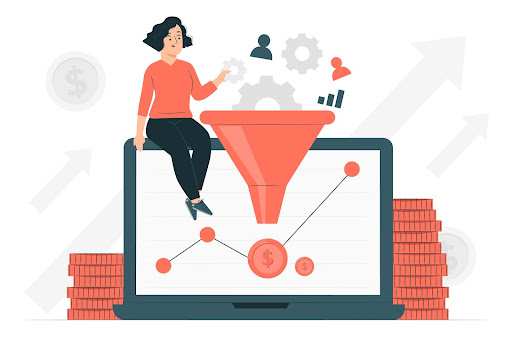10 Reasons Why Your Website Has a Low Conversion Rate


It's the eternal question for website owners: why do I have a low conversion rate despite high traffic?
On average, a website converts between 2% and 5% of its visitors into leads or sales. If you're not seeing results in this range, then it's time to take a look at your website and see what might be holding you back.
But don't fret. There are several reasons why your website might have a low conversion rate, and many of them can be easily fixed. We're sharing the top 10 reasons below.
Why You Need to Improve Your Conversion Rate
Before we get into the reasons why your conversion rate might be low, let's briefly touch on what a conversion rate is and why it matters.
A website's conversion rate is the percentage of visitors who take the desired action. This could be anything from making a purchase to signing up for a newsletter to downloading an eBook.
Conversion rates are important because they give you insights into how effective your website is at achieving its goals. If your conversion rate is low, it means that most people who visit your site are leaving without taking the action you want them to take.
Why Your Website Has a Low Conversion Rate
There are a number of factors that can influence your website's conversion rate, including.
1. Your website is hard to navigate
Imagine that you're a business owner looking to find small business phone solutions for your company. You Google "small business phone solutions" and click on the first result. Once you're on the site, it's immediately clear that it will be difficult to find what you're looking for. There's no main navigation menu, and the text is small and difficult to read. After a few minutes of frustrated clicking around, you give up and go back to Google to try another result.
This common problem can easily be fixed by ensuring that your website is easy to navigate. Some tips to make your website more user-friendly include:
-
Adding a main navigation menu.
-
Using clear and concise text.
-
Incorporating visual cues to guide users.
-
Creating a search bar.
2. Your website takes too long to load
Another common reason for a low conversion rate is a slow-loading website. In today's fast-paced world, users expect websites to load almost instantly. If your site takes more than a few seconds to load, you're likely losing visitors - and potential customers.
40% of users will abandon a website that takes more than 3 seconds to load. Yes, you read that right - after 3 seconds, half of your visitors could be gone, and you may never see them again.
You can do a few things to improve your website's speed. This includes:
-
Using a Content Delivery Network (CDN).
-
Optimizing your images.
-
Minimize HTTP requests.
-
Reducing redirects.
-
Enabling browser caching.
3. Your website is not mobile-friendly
In today's world, it's more important than ever to have a mobile-friendly website. According to Statista, there are around 7.26 billion active mobile users! And this number is only expected to grow in the coming years.
This means that your website needs to be optimized for mobile devices if you want to stay competitive. If it's not, you're likely losing a significant portion of your potential audience.
Some things you can do to make your website more mobile-friendly include:
-
Use responsive design.
-
Use a large and easy-to-read font.
-
Use large buttons.
-
Include mobile navigation.
4. You're not using pop-ups
Pop-ups are one of the most effective ways to convert website visitors into leads or sales and the average pop-up conversation rate is 11.09%.
The key to using pop-ups effectively is ensuring they are targeted and relevant to your audience. For example, suppose you're selling an automated phone system for small businesses. In that case, your pop-up might offer a free consultation to help companies to find the best phone solution for their needs. In contrast, your pop-up might offer 10% off the first purchase if you're selling women's clothing.
5. You're not using social proof
If you want to increase your website's conversion rate, it's important to use social proof. Social proof is a psychological phenomenon where people assume that the actions of others in a given situation indicate the correct thing to do
In other words, if other people are doing it, it must be good.
Some examples of social proof include:
-
Testimonials from satisfied customers.
-
Badges or awards from well-known organizations.
-
The number of social media followers you have.
-
The number of website visitors you get each month.
So if you sell ecommerce inventory management software, for example you could create a video testimonial of one of your customers who love your solution.
6. You're not using images
If you've ever heard the saying ‘a picture is worth a thousand words’, you'll understand why using images is so important.
Images are great for grabbing attention and conveying information quickly and easily. Plus your customers are more likely to remember you and come back. In fact, according to BrainRules, when people hear information, they're likely to remember only 10% of the details three days later. However, if a relevant image is paired, people retained 65% of the information three days later.
Some tips for using images effectively include:
-
Use high-quality images.
-
Use images that are relevant to your topic.
-
Use visually appealing images.

7. You're not using video
In addition to images, video is another excellent way to increase your website's conversion rate. That's because videos are an incredibly powerful medium that can be used to grab attention, convey information, and build trust.
Let's say you're trying to promote your digital workplace platform to small businesses. You could create a video that shows how the platform helps businesses improve communication and collaboration. This will likely be much more engaging and effective than a long block of text explaining the same thing.
Other ways you can use video to convert your traffic into leads is by creating an engaging webinar, an explainer video that walks people through your product or service, or video testimonials from satisfied customers.
8. You're not using an email capture form
An online capture form is a must-have if you want to increase your website's conversion rate. Email capture forms are used to collect email addresses from website visitors so that you can add them to your email list. This allows you to stay in touch with them, build a relationship, and eventually convert them into customers.
If a business owner comes to your site to browse ecommerce inventory management software, they may not be ready to purchase immediately. However, if you have an email capture form on your website, you can stay in touch with them and eventually convert them into paying customers.
Remember to keep your email capture forms short and sweet. The less information you ask for, the more likely people will be to fill it out. All you really need is their name and email address.

9. You're not using a call-to-action
A call-to-action (CTA) is a piece of content that encourages website visitors to take a specific action. For example, a CTA could be a button that says 'Sign up for our newsletter' or 'Download our e-book'.
CTAs are an important part of any website because they help to guide visitors toward taking the desired action. Without a CTA, visitors may not know what to do next or how to take advantage of your offer.
When crafting your CTAs, be sure to:
-
Keep them short and sweet: anything over five words is too long.
-
Use action words like 'Download,' 'Sign up, or 'Watch now': this helps make it clear what you want visitors to do.
-
Use contrasting colors for your CTA buttons: this will help your CTA to stand out from the rest of your content.
-
Place them in an easily visible spot: Don't hide your CTAs at the bottom of the page or in a sidebar. They should be front and center.
10. You're not testing and optimizing
Finally, one of the most important things you can do to increase your website's conversion rate is to test and optimize regularly. This means constantly trying new things and then measuring the results to see what works and what doesn't.
For example, if you sell a conference calling system and are finding that your product page isn't converting very well, you could try adding a video or changing the copy. Then you can use analytics to see how these changes affected your conversion rate.
A/B testing is a great way to monitor different elements of your website to see what works best. With A/B testing, you create two versions of a page (Version A and Version B) and then send traffic to both pages to see which one performs better.
Final Thoughts
So there you have it. These are just a few of the many reasons why your website might have a low conversion rate despite high traffic. You can see a significant improvement in your conversion rate by making even a few small changes.
Remember, not all of these changes are quick or easy to implement. Some require significant time, effort, and skill. To avoid overworking employees, consider hiring a conversion rate optimization agency to help you with these changes or outsourcing a freelance web developer.
Good luck and happy converting!
About the author: Grace Lau is the Director of Growth Content at Dialpad, an AI-powered cloud call center system for better and easier team collaboration. She has over 10 years of experience in content writing and strategy.

Subscribe to Our Newsletter!
Latest in Marketing







